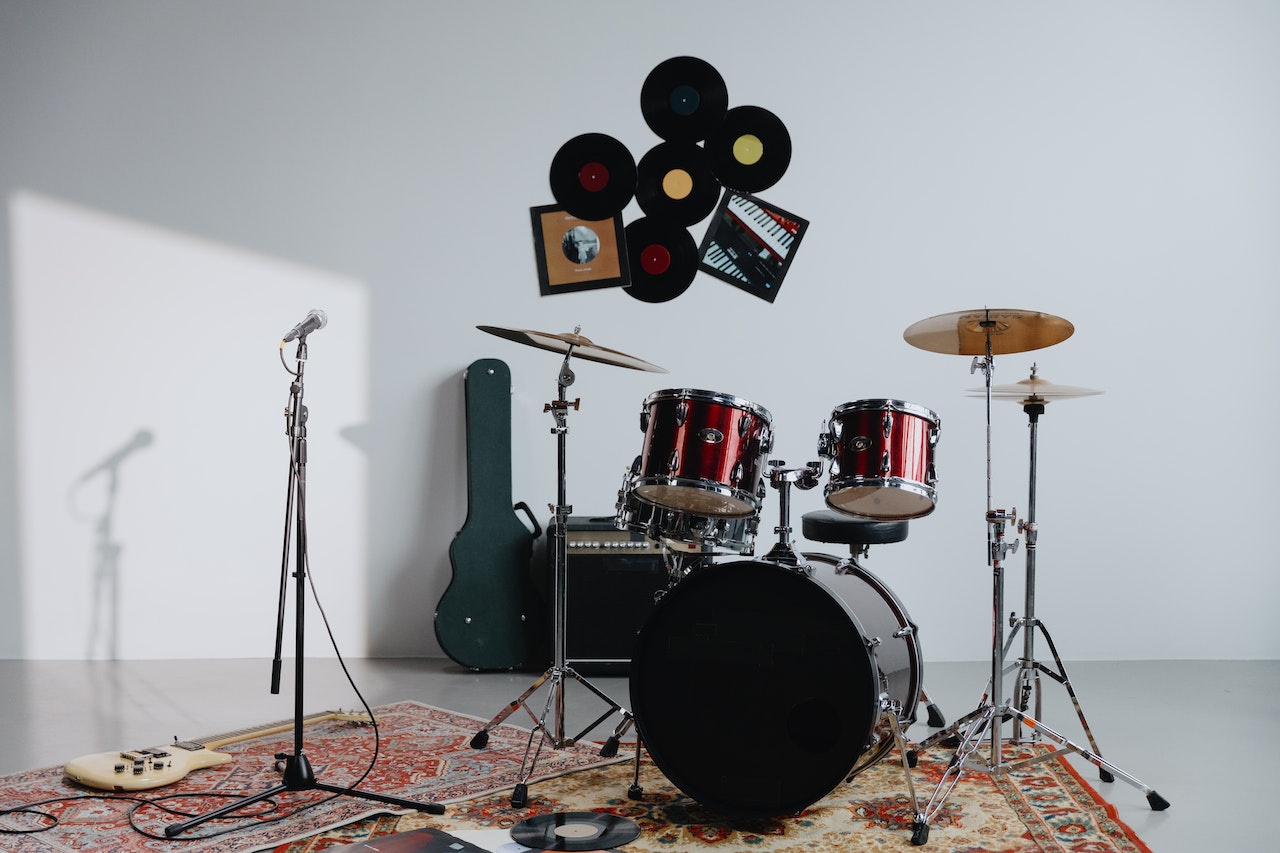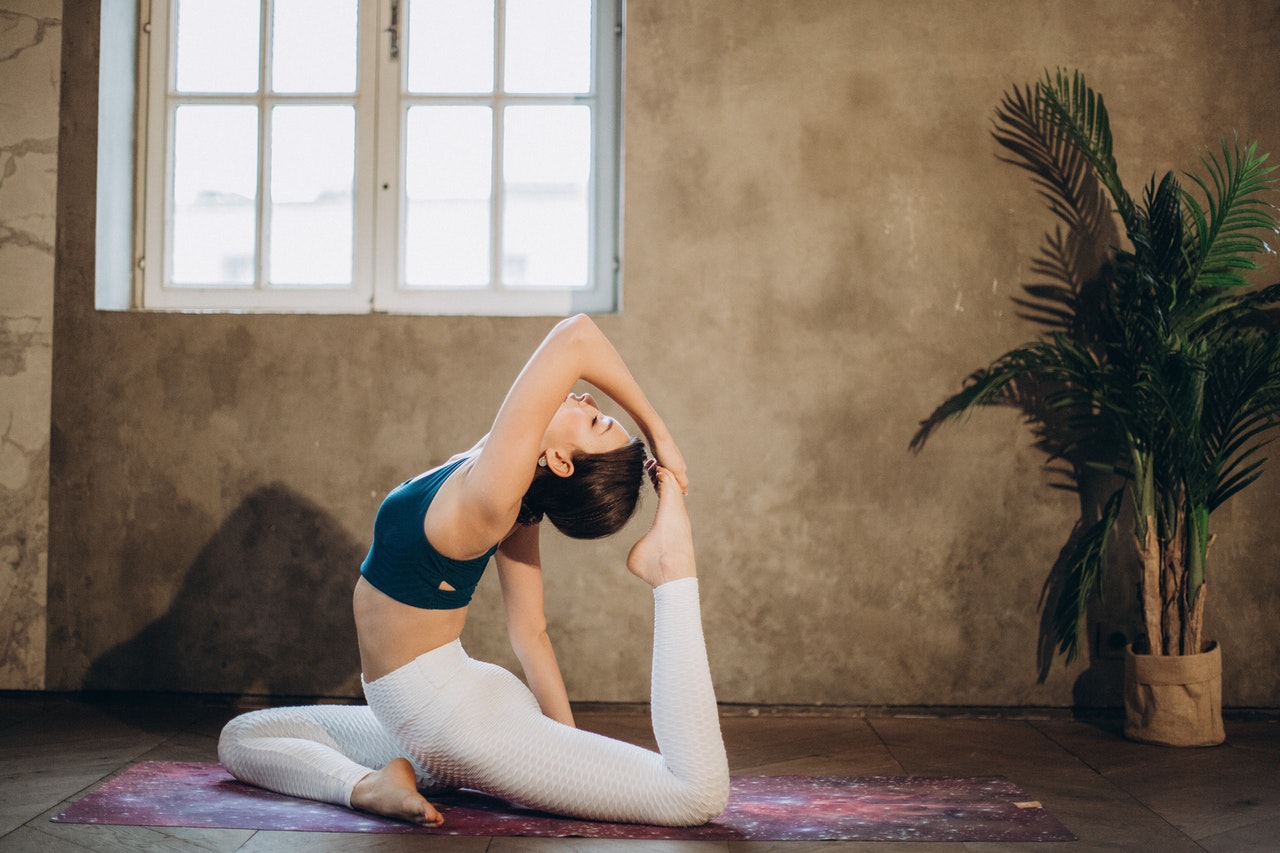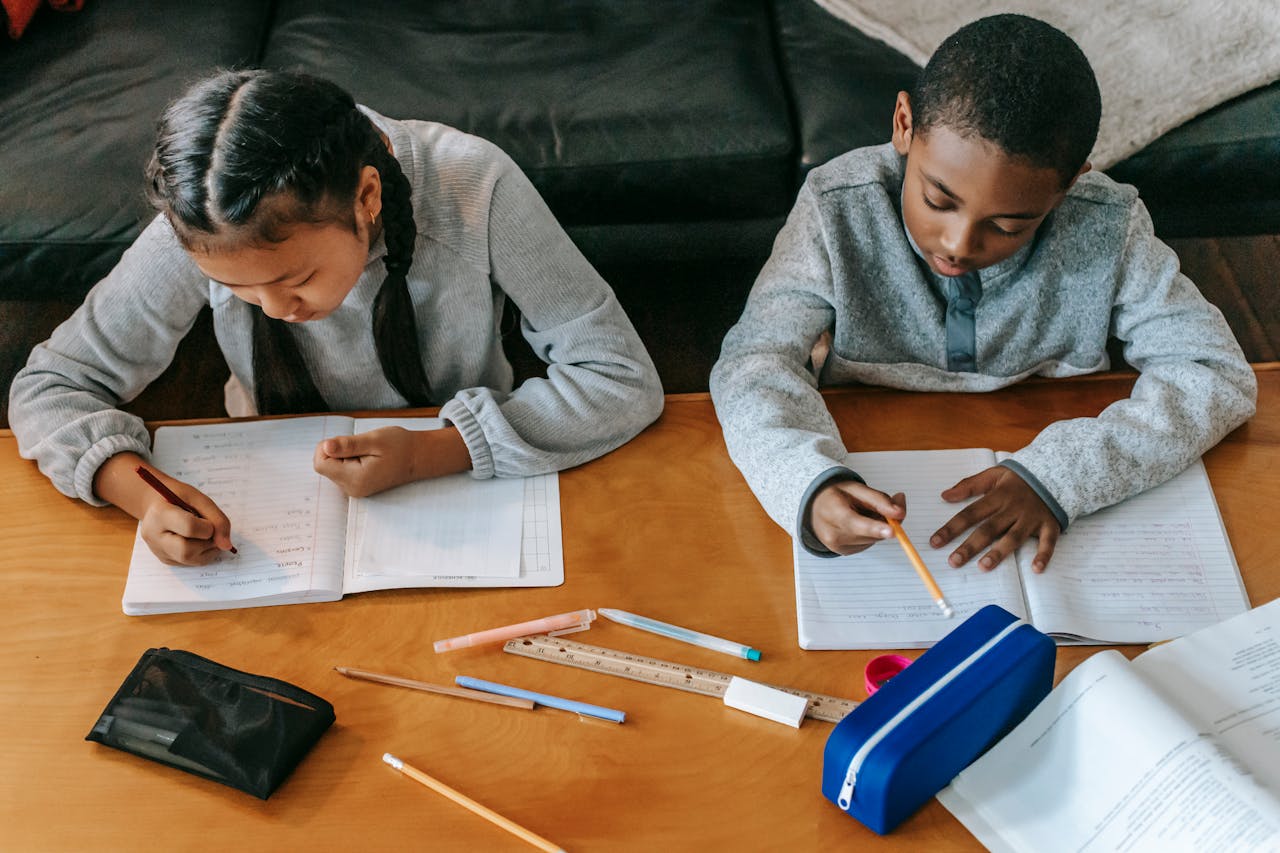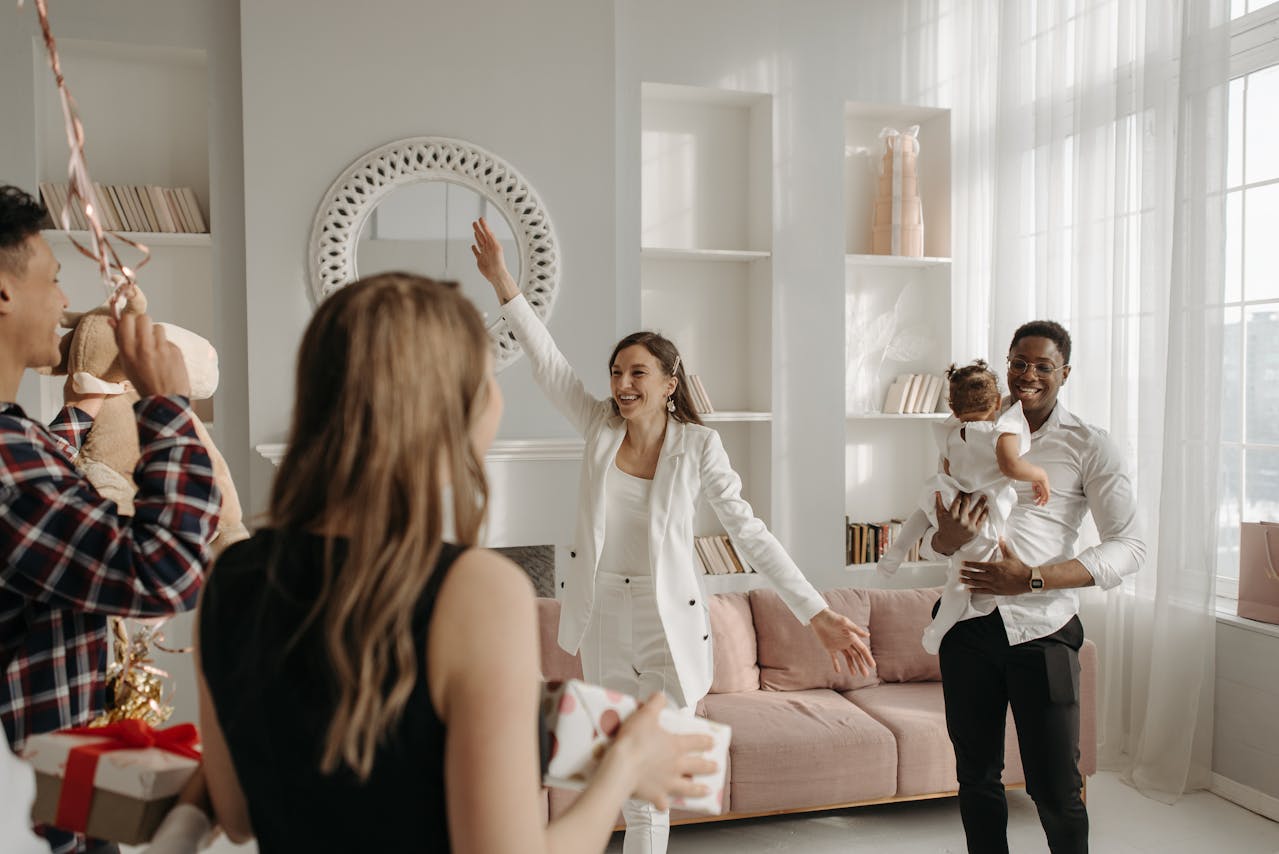Music is deeply embedded in human nature and history. Every single known civilization had its own music. There’s a common saying that “music is food for the soul”; music and singing are some of the purest ways of expressing thoughts and feelings, and more people are giving it a shot. Both music and singing require frequent practicing time, but since not everyone who gets into music goes to a music school, not everyone has access to appropriate music rooms, which leads most people to practice at home. Nevertheless, practicing at home may come with a series of downsides like disturbing neighbors (or other cohabitants), outside noise, uncomfortable spaces, or constant interruptions, just to name a few. Whether it’s piano lessons, classical singing, a jazz rehearsal, or a recording session, specific requirements have to be met for a successful practice time.
We reached out to experts who would give us useful information and tips on adapting home areas for music and singing practice, creating music rooms, and other tips for improving practice routines at home.
This is what they told us:
“What tips would you recommend for guitar students who practice at home not to develop bad posture?”
Most guitar students choose to sit down instead of stand while practicing at home, and this is perfectly OK, as long they sit with good posture.
Sitting slouched over a guitar for an hour (or more) per day would have adverse short and long-term effects on your body, causing pain in your neck, back, and arms.
Here are some simple, practical tips I give my students on how to keep good posture while practicing at home:
- Sit straight and relax your shoulders, don’t lean back into your chair or hunch your back onto your guitar. Remember to maintain a straight back and not raise your shoulders while practicing.
- Pull the guitar close to your body as it sits comfortably on your thigh without having to hold it in place.
- Don’t use a chair with a high sitting position. Sitting a bit lower is better because it raises your leg slightly, letting you put your guitar onto your thigh without it falling forward.
- Don’t cross your legs either. It’s tempting, especially on chairs that are too high, since crossing your legs raises your guitar. Instead, getting an adjustable guitar chair or a guitar foot stool is a good option.
- Keep your music sheets, tablet, etc. in front of you on a music stand or desk, not to the side on your couch. This way, you won’t strain your neck looking down and sideways all the time.
- Don’t play with the neck of your guitar too low, as it will strain your wrist. Your fretting hand should be at least level, preferably higher than your strumming hand.
- Take a break to stand up and stretch your back and shoulders every 30-45 minutes.
If you feel pain or tenseness in your back or neck, you’ve probably been sitting with bad posture. Take a break, then knowingly correct your posture when you continue. After a while, it will all become natural.
Tom Fontana
The Guitar Lesson
“After the pandemic started, many teachers and students switched to online teaching. This includes music as well. How can I adapt my home environment in order to have the best online music teaching/learning experience?”
The first thing with any kind of setup for learning is to establish what the absolute minimum requirements are to get started. Yes, there are always better, higher quality setups but the more bells and whistles the higher the barrier to entry. So, I’m going to talk about the basic setup, one that’s accessible for most people without having to buy expensive gear on top of your musical instruments themselves.
There are three things you’ll need for a workable online music learning experience, these are:
- A device with a camera and mic
- Headphones
- Somewhere to place the device at the right distance from you
Let’s look at each of these in a little more detail:
A device with a camera and mic
This is an easy one as most people will have a laptop or tablet. These make the best devices because they have decent sized screens. A plan B can simply be your smartphone. Now, the microphones in these devices are not pro quality, but assuming your device was released in the last 5-6 years, they are usually good enough to handle a music session. Certainly the camera will do the trick.
Headphones
You need headphones so that you are able to hear your teacher over the sound of your performance. One thing about online lessons that teachers can often find difficult compared to in person tuition is that they are unable to coach the student during playing, or easily stop them at the right moment, because of the difficulties with the tech. Headphones help to close that gap. Bluetooth headphones are definitely recommended as they remove the issue of managing wires, but you can get away with wired headphones too. One note here, if your headphones also have a mic, go to your device and change the settings to use the device’s mic instead, otherwise the sound will be too close to the instrument (or your voice) and can lead to distortion of sound.
Somewhere to place the device at the right distance from you
As hinted in the previous point, you need your device’s mic to be about 1.5 metres from the source of the sound so you don’t overwhelm the mic and cause distortion. To achieve this, use a table or stool. Ideally, your device should be eye level for you, so a stack of books may be your friend there. For a more permanent solution, look at laptop stands or other tabletop devices that can elevate your device. And… for all you pianists out there… no, placing the device on top of your piano isn’t a good idea, it’s too close to the sound. Instead, look at having your device to one side of the piano.
The above three tips will get you off to a good start with your online music lessons. From there you might seek to add a bluetooth microphone to level-up your setup. There are other standard music items you’ll want like a music stand, musician’s stool etc but you should have those regardless of whether you’re learning online or not. Lastly, if you don’t yet have one, you can use the Stars & Catz online metronome until you invest in a real one.
All that’s left to say is good luck in your music journey!
Oli Braithwaite
Founder
Stars & Catz
“What are the top five features a home practice area has to have to cover a guitarist’s needs?”
The top five features a home practice area has to have to cover a guitarist’s needs, are: a quiet room, enough space, good lighting, easy access to outlets, and enough storage for all of your guitar gear.
- If you’re looking for an area to practice your guitar without interruption, a quiet room is a must. You don’t want to be disturbed while practicing by traffic or other disturbing noise sources. On the other side, YOU don’t want to disturb your roommates or neighbors with your perfectly played strange sounding riffs.
- Whether you play your guitar sitting or standing, you need enough space. I recommend between 3 and 4 feet of space in front of you, and at least that much on either side. This gives you enough room to stand comfortably with your guitar or appropriate seating, since posture is essential for your health and correct playing. Also keep in mind, you maybe want a music stand for sheet music in front of you. And to have a metronome next to you is also a good idea.
- Even if you are a gothic rock guitarist, practicing in the dark is not the way to go. But what you need to practice your guitar effectively, is good lighting. Good lighting allows you to see the strings clearly, making it easier to play correctly. It also enables you to see the notes and chords on the sheet music, making it easier to learn new chords and melodies.
- As an electric guitar player, it is a must to have easy access to outlets. You need an ample number of outlets to plug in your equipment. This is especially important if you’re using an amplifier and a variety of pedals and effects. Not having enough outlets can be a major inconvenience, leading to missed opportunities and frustrated guitarists.
- Having enough storage for all of your guitar gear is important not just because you’ll want to keep your equipment in one place, but also because you’ll want to be able to find what you’re looking for quickly. Having too much gear strewn about will make it difficult to find what you’re looking for and will also take up valuable space.
Rick Pena
Guitarist
All Stringed
“How would you turn an area at home into a Music or Voice studio with a $1500 budget?”
First and foremost, it’s important to work in a space that makes you feel calm, cool and collective. In my opinion, that starts with the color of the room. It’s a scientific fact that color affects mood, so being happy with the paint, especially if you’re in the room every day, is important.
Invest in the best software to write, record and upload music that works for you. Professionally, this is referred to in the industry as a “digital audio workstation.” There are a lot of programs out there that offer a free trial prior to a full purchase. These programs can start at a few hundred dollars, so it’s important to make sure you like them before you buy them. Remember to base your software purchase on what best satisfies your wants and needs.
With good software comes something to run it on! There are plenty of computers out there that will do what you want without breaking the bank.
Good audio equipment is essential. I’ve reviewed many music submissions and can always tell when someone hasn’t fully committed to their craft because they didn’t invest in the right audio equipment. Keep in mind, when investing in a microphone, get a good mic stand and a pop filter to start.
Soundproof, soundproof, soundproof. There are so many different options out there to soundproof a room starting at just a few hundred dollars. Doing so, it’ll help lessen any reverberating sound and improve overall acoustics.
Be comfortable! Oftentimes, people underestimate the value of a good seat. Musicians have to take into consideration that they’ll be sitting for hours on end sometimes, so purchasing a good chair is worth the investment.
Last, but not least, remember that passion can only take you so far before you need to start investing in not only yourself, but also your craft.
Ashley Friedman
Editor
Elicit Magazine
“When setting up a Home Music or Voice Studio, where would you start? What goes where, and how would you make it look neat (without a mess of cables or gear cases everywhere)?“
Start with cable management. I make sure all the wires are tidy, tie them with scotch tape or bundle and hide them all under the table. Then I put a monitor (laptop) on the table, then put racks for monitors on the edges of the table so they do not take up space on the table. Further, if there are any musical instruments, put them on the table or next to the racks. And for the beginning I would even close the window with thick curtains or thick blankets to give good noise isolation in the beginning. And it would be ideal to put acoustic foam – at least 2×1 meters in size – on the wall in front of the monitors. This will give additional noise isolation. If it is not possible to hang acoustic foam rubber, you can replace it with a carpet, it is also very good at damping the ringing.
Yborg
Soundsmag
“How to choose the right studio headphones?”
First of all, if you want headphones for musicians to monitor recording sessions, you shouldn’t look for a few aspects that could make the gear a lot more expensive. Basically, you want headphones that sound good and also isolate outside noise – believe me, your drummer wants this. So no need to look for the best and huge frequency responses, which would make that headphone a lot more expensive. Remember: sounds good and isolates outside noise.Want some gear tips? Look for Sennheiser HD220 and Audio Technica ATH-M40X.If you, on the other hand, want to mix and master your songs with headphones, well, think twice. You should actually be looking for studio monitors. However, I believe you already had that though and want to either have a second reference for mixing or you’re on a lower budget and you’re looking for that specific headphone that will do the job of studio monitors.So here’s the deal. Now you want headphones with a flat frequency response. They must not have any kind of boost in high, mediums, or low frequencies. Otherwise, you’ll have a completely wrong monitoring of what your song needs. So in this case, it makes sense looking for a good range of frequency curve and make sure they’re flat frequency responsive.Want more gear tips? Look for Sennheiser HD600 and Audio Technica ATH-M40X. There might be a bit of buzz around that discussion, but I can assure you that they are both flat responsive and great enough for mixing and mastering.Well, as soon as you finish your song you’ve got to distribute it, right? Take a look at how Magroove can put your music on Spotify. It’s free to use, charges only a small yearly fee, and only if you make your digital royalties. There are also a lot of other tools to help you promote your song.
Vitor Cunha, CEO
Magroove
“How should my environment be if I practice my voice routine at home?”
There are so many factors to consider for success when practicing your singing.
But what should an environment provide when it comes to practicing your voice routine?
Firstly, if you have the space to create a distraction-free environment, ideally that room would only contain the equipment you need for your vocal practice sessions.
If you’re trying to practice your singing routine and are constantly getting interrupted by the people around you, your phone, or even a computer screen, then eliminating these distractions can be a game-changer.
Creating an inspiring environment can give you even more motivation to work on your voice. While it’s not crucial, all of these elements can play a part in your success. Your practice space could feature anything from framed posters of your favourite singers/bands, large windows with lots of sunlight or even an abundance of greenery in the form of plants… Basically whatever makes you feel good and ready to practice!
Finally, your environment will be easy to work in if it features the right equipment. If you want to set yourself up for success, it pays to have the following tools on hand:
- A Large Mirror – A singer’s number #1 tool. Mirrors are perfect for monitoring your posture, what your mouth is doing and perfecting your sound.
- Piano – A great tool for warming up your voice, performing pitching exercises, aural training and various other vocal exercises. Make sure it’s set up and ready to use. Even if you don’t play the piano, it doesn’t take a lot to learn basic exercises and it’s a great investment for any singer.
- Music Stand – A music stand serves as a great place for housing your song lyrics, repertoire list and sheet music.
- Computer & Speakers – A device with audio output to play your music or tutorial videos through will allow you to learn new techniques within your practice environment and allow you to sing along to instrumental tracks.
- Microphone & Camera – Having the means to record both audio and video ensures that you have everything you need to capture your voice for critique and sharing.
It’s not crucial to have all of this equipment, but it’s certainly an advantage to have everything in one space.
Hopefully, this article brings you a little inspiration when setting up your singing environment, making sure your voice routine is on point every day!
Brenton Darvill
Vocal Coach
Voicehouse
“As a Pro-guitarist, when practicing at home, what tips would you recommend to avoid disturbing cohabitants or neighbors?”
As guitar players we have to deal with practicing among family, friends and other cohabitants who are not interested in your heroic practice.
Don’t worry, there are many effective ways to keep your practice going in every circumstance.
First you want to find a space where no one can disturb you. You don’t need a big space, just somewhere you can sit with your guitar. For all ones cares practice in a closet with a flashlight on. You want to become a better guitar player, right?
You can also wake up early or stay up late while everyone is sound asleep and practice in the living room without waking them up. There are several ways to go about this.
You can practice on an electric guitar unplugged (without use of an amp). This makes almost no sound, but enough for you to practice appropriately or plug your guitar straight into the amp and play with your headphones on.
If you’re playing acoustic guitar you can play songs and chord progressions by strumming the strings with the flesh of your thumb really gently. You can practice chord changes where strumming (and thus sound) is not your main goal. To check if your chord sounds clean and clear, softly touch all six strings one by one.
If you want to focus on strumming you can mute the strings by gently placing your left hand (for right handed players) on top of all the strings. Make sure you’re not pressing your fingers but softly resting them on the strings so you don’t hear the strings ringing when you’re strumming. You will just hear a muted sound (chuak chuak).
If you want to practice your picking technique you can do the same thing. Mute the strings with your left hand and practice alternate picking with the other. Pick three notes per string ascending and descending. You can play some harmonics if you want to hear a nice quiet sound while picking.
I hope these tips will give you the tools you need to keep improving and become an accomplished guitar player. Practice well!
Klaus Crow
Guitar Habits
“What would you recommend to include at a home studio and during piano practice to avoid developing a poor/faulty technique?”
With the accessibility to online piano learning tools, YouTube tutorials, piano apps, and more, it is easier than ever for people to learn and develop their piano abilities at home. That is great! However, like developing any new skill, it is important to be aware of certain bad habits that can develop when practicing and stop them at the source if possible. Here are a few do’s and don’ts for your practice sessions:
Do: Warm Up
This one is important! Just like any muscle in your body, your hands and wrists need to be warmed up before you start using them. Playing too much with cold or tight wrists and fingers can lead to soreness and injuries in that area that can derail your progress. Start with a few quick finger stretches and some simple scales to get the blood flowing!
Don’t: Rush
It can be tempting to jump into new scales, exercises, and pieces by trying to push yourself to play as quickly as possible. There is nothing wrong with playing fast when you need to, but playing a song or exercising too fast before you have learned it can lead to repeating mistakes or bad habits. Start slow, build your muscle memory, and then go for it!
Do: Use A Metronome
As a pianist, you are required to do different things at once. Often you need to play a melody, some chords, and a bassline, and keep the tempo all at the same time. If you are learning a new song, a metronome can help keep you on tempo while you figure out the other parts of the piece. Start slow and increase the speed as you feel more confident!
Don’t: Always Play At The Same Volume
Dynamics are one of the biggest tools a pianist has to express emotion and tell a story through their playing. Make sure you use them! Switching from soft to loud, and vice versa can do a lot to change the feel of a song as you make your way through different verses and choruses. Even a little adjustment can go a long way! Try playing different passages louder or softer and see what feels best to you. Soon it will be second nature!
Do: Have Fun!
This is a bit of a cliché, but it’s important! You will make the most progress if you are practicing and playing consistently, and you will naturally want to do that more if you are enjoying the experience. Sometimes you should be pushing yourself to tackle more difficult challenges, and sometimes you should take it easier and maybe try to put a new spin on a familiar song you enjoy. Variation is key!
Jordan Faries
OnlinePianist
“Drums are a powerful instrument, but they’re also known for being loud; What would you recommend to do (or how would you adapt a room) not to disturb others during practice at home? (assuming an electronic drum set is not available).“
As a drummer, you’ll know how important practice is to developing your timekeeping and drumming techniques. But if you live in an apartment or other close quarters, you also know that drumming can be a real pain for your neighbors.
Fortunately, there are a few things you can do to minimize the noise and keep everyone happy! Here are some of my top suggestions on how not to disturb others while playing the drums.
Soundproof a practice room
The most effective way to reduce the noise of a drum set is to soundproof a practice room entirely. However, this is the most challenging and time-consuming method, and many underestimate what is actually required to professionally soundproof a practice room.
Oftentimes people think that soundproofing a room involves installing acoustic foam panels on walls, but this only helps to absorb the sound by reducing the amount of noise that travels throughout the room.
To soundproof a room significantly, a room must be built within a room for maximum sound isolation. Soundproofing a room is challenging because sound waves can pass through walls, windows, and other openings very easily. Furthermore, soundproofing materials can be expensive, and a good knowledge of construction and DIY is required.
Dampen the sound of the room
Noise can still be reduced somewhat without spending much money. This can be done by moving your drum set to a different location further from neighbors and also by “beefing up” existing walls, floors, and ceilings to dampen the sound.
You can also use rugs, curtains, or other materials to absorb sound. If you have hardwood floors, consider covering them with a rug. Hang curtains over your windows to help dampen the sound.
Also, ensure that your practice space is as isolated as possible. If you have a separate room for practicing, that’s ideal. And try to practice in a room of your home that’s farthest away from your neighbors’ walls.
Utilize mesh drumheads and low-volume cymbals
If you have an acoustic drum set, you can install mesh practice heads and low-volume cymbals onto your kit, which offer an impressive noise reduction of up to 80-90%.
These are inexpensive practice tools that can easily be placed directly onto the drum shells and cymbal stands that reduce the volume of your playing significantly while still feeling great to play!
Or more simply, you can muffle the drums using everyday household tools such as towels and blankets on top of the drums.
Invest in an electronic drum set
Electronic drums are excellent for practicing at home, and the latest electronic drums from Roland, Alesis, and Yamaha are really impressive. They offer a realistic playing response and killer sounds too.
Although admittedly, they don’t feel quite as good to play as a real acoustic drum set, they take up less space, offer a much wider range of sounds, and represent an ideal solution for those looking to practice at home regularly without disturbing others.
Practice during reasonable hours
Finally, remember to be considerate of your neighbors and practice during reasonable hours. Avoid practicing late at night or early in the morning. And if you know your neighbors will be home during certain hours, try to avoid practicing during those times as well.
Following these simple tips, you can practice your drums at home without driving your neighbors crazy. So keep calm and drum on!
Gideon Waxman
Drum Helper
As a Professional Pianist, what tech gadgets would you recommend other musicians incorporate into their own practice?
I’m a firm believer in using technology to help people develop skills, rather than to replace human skills. Here are a few tech tools that have become indispensable for me as a musician
iPad Pro
The release of the iPad Pro in 2015 was a game changer for practicing musicians to embrace digital sheet music. A large tablet can be the heart of your digital music life. If you’re looking for an iPad, the larger 12.9” model is a must since it’s about the size of a standard sheet of letter paper. All of the “Pro” features are really overkill. For sheet music, all you really need is a tablet with a big screen, so even an older model you can find used will more than be up to the task. (Rumor has it Apple has a 14” iPad in the works, which might be even better still.)
Long USB-C cable
Don’t forget to charge your iPad while playing—you don’t want to run out of juice right when you need it most!
Henle Library app
All of Henle’s famously high-quality sheet music editions are now available in their Henle Library. You’ll get exactly the same scores found in their renowned print editions, only cheaper. You can buy scores by purchasing credits for their in-app store, and the more credits you buy at once, the cheaper they are. There are comprehensive annotation features as well as multiple sets of fingerings for some works—or you can hide editorial fingerings altogether if you prefer to “finger it out for yourself.” You can now even print Henle scores in high quality.
forScore
For your sheet music collection in PDF format, there’s really no better app than forScore. It’s basically a PDF reader that has been optimized for sheet music. forScore has tools to aid you in learning music, organizing your library, teaching, and performing.
Polynome
Polynome is the metronome app to end all metronome apps. Its creator, Joe Crabtree, is a drummer who developed this app for practicing any rhythm, from simple to impossibly complex. It may not be the most intuitive app to learn to use, but that’s only because of its immense power. With Polynome you can program any rhythm, no matter how complex. Polynome was a godsend for me when tasked with learning composer Nimrod Borenstein’s brain-twisting 3 against 4 against 5 against 7 polyrhythms (yes, all of them simultaneously!) in his musical brain teaser, “Les contrastes Étude.”
Bluetooth pedal
You’ll want a pedal to help you turn pages during practice and performance. AirTurn, founded by the early adopter of tech tools for musicians, pianist Hugh Sung, offers several good options such as the slim AirTurn Ped. More recently I discovered the Donner pedal, a cheaper yet well-designed and -made alternative.
TomPlay
TomPlay is an app, available for all major mobile and desktop platforms, that acts as your virtual chamber music partner. With it, you can work out your cues and complex rhythms played with other instruments, even before your first rehearsal. The company is a startup based in Switzerland. They partner with many musicians and recording studios to record a rapidly growing library of accompaniments. Don’t expect Grammy-winning interpretations of all works, nor will the virtual accompanists take time where you might, but that’s not the point. It’s like the old Music Minus One recordings, but for the internet era. Using their app you can turn individual parts on or off, change the tempo, and loop passages for practice.
I find that TomPlay works best on a desktop that is also connected to a digital piano, for the simple reason that it’s then possible to hear both your playing and TomPlay’s recorded sound on the same headphones or speakers.
Mechanical metronome
Last but not least, let’s not forget a simple mechanical metronome! It may be the same mechanism that was invented over two centuries ago, but sometimes all you need is a mechanical tick-tock that no electronic device can reproduce.
Albert Frantz
Key Notes
At Porch, we love bringing you the best advice we can to help you succeed with any home improvement-related endeavor. Each piece of advice provided here is a fantastic way to help you adapt a space at home for music and singing, and for improving your practice routines. We hope that the variety of perspectives presented here will enrich your life as much as it’s improved ours. We thank each of the experts who participated in this round for sharing their experience and knowledge.




